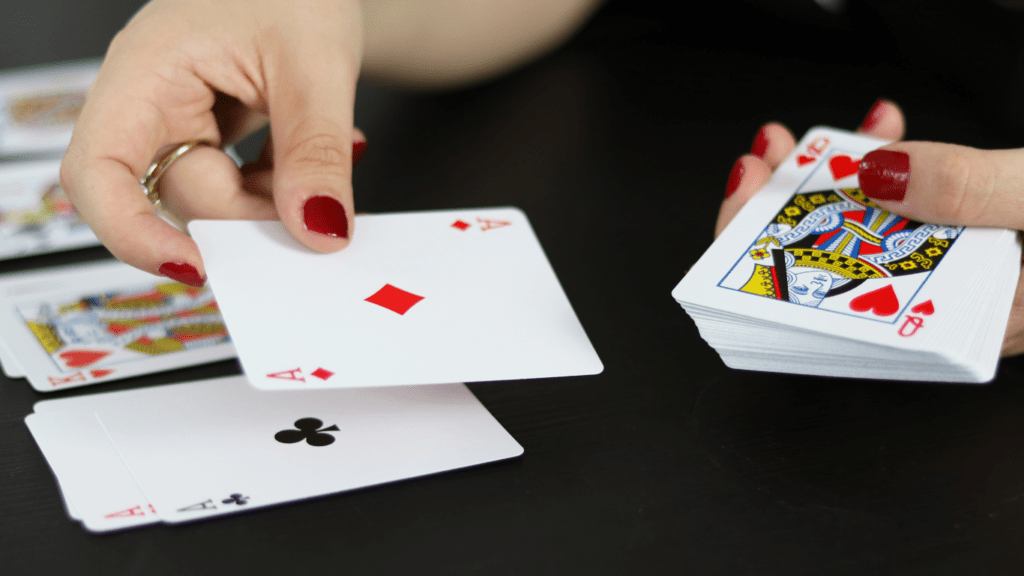Poker isn’t just a game of luck; it’s a battle of wits and psychology. As I’ve delved deeper into the world of poker, I’ve realized that mastering the art of reading opponents can be the difference between winning and losing. Understanding your opponent’s behavior, betting patterns, and even their body language can give you a significant edge at the table.
In this article, I’ll share advanced strategies that have helped me elevate my game. From recognizing tells to analyzing betting trends, these insights will empower you to make informed decisions and outsmart your rivals. Whether you’re a seasoned player or just starting, learning to read your opponents like a pro can transform your poker experience.
Let’s dive into the nuances of this fascinating skill and unlock the secrets to becoming a more formidable player.
Understanding Your Opponent’s Mindset
Reading your opponent’s mindset is crucial for making informed decisions. Recognizing psychological patterns helps improve gameplay.
The Psychology of Poker
Understanding the psychology of poker enhances strategic play. Players exhibit psychological traits that reveal their strategies. Factors such as emotions, confidence, and risk tolerance affect decision-making. For instance, an overly aggressive player may bluff frequently, while a timid opponent may fold at signs of pressure. Identifying these traits allows me to adjust my approach accordingly.
Common Player Types
Recognizing common player types aids in predicting behavior at the table. These include:
- Tight Players: Tight players focus on playing strong hands. Their hesitance to engage can mask strength, making it vital to pressure them with bluffs.
- Loose Players: Loose players frequently enter pots and play a wide range of hands. They can be exploited through calculated aggression, as they often overvalue weaker hands.
- Aggressive Players: Aggressive players continuously bet and raise. They thrive on pressure and intimidation, making it essential to respond cautiously.
- Passive Players: Passive players rarely bet or raise, preferring to check and call. This tendency signals weakness, presenting opportunities for value betting.
Understanding these player types helps in tailoring my strategies to gain an edge over opponents. Each type has distinct betting tendencies, making it easier to anticipate moves.
Reading Body Language and Tells
Reading body language and tells transforms my gameplay. It’s essential for understanding opponents better and exploiting their weaknesses.
Identifying Physical Cues
Identifying physical cues offers insight into opponents’ emotions and intentions. Common cues include:
- Posture: Leaning forward might indicate eagerness, while leaning back can suggest uncertainty.
- Hand movements: Fidgeting or shaking hands often signifies nervousness; steady hands may reflect confidence.
- Leg movements: Shaking legs can indicate anxiety, while crossed legs may reveal defensive attitudes.
I analyze these cues to assess whether an opponent feels strong or weak about their hand.
Interpreting Facial Expressions
Interpreting facial expressions sharpens my ability to discern opponents’ thoughts. Key expressions include:
- Smiles: A genuine smile may suggest confidence, while a forced smile can indicate tension or deceit.
- Frowns: Frowning might reveal frustration or discomfort with their hand.
- Eye contact: Avoiding eye contact often indicates anxiety or bluffing; steady eye contact may show confidence.
By focusing on these facial expressions, I gain valuable insights into my opponents’ mindsets, helping to guide my strategy.
Utilizing Betting Patterns
Betting patterns reveal a wealth of information about opponents’ strategies and hand strengths. By analyzing these patterns, I can gain insights into their decision-making processes and adjust my tactics accordingly.
Analyzing Pre-flop Actions
I focus on the actions players take before the flop to gauge their hand ranges and mindset. If an opponent raises consistently from early positions, they likely hold strong hands. Conversely, frequent late position raises can indicate a wider range of hands.
Additionally, players who call rather than raise often lean toward drawing hands or weaker cards. Observing whether a player folds frequently or calls with varied hands further informs my understanding of their style. Noticing these trends helps me to adjust my approach, either by exerting pressure or defending more strategically.
Recognizing Post-flop Behavior
Post-flop betting reveals critical information about my opponents’ confidence and intentions. If a player leads out with a significant bet on the flop, it often indicates a strong hand or a strong draw. Alternatively, a check-raise might suggest a strong hand trying to trap aggressive players.
Watching for continuation bets also provides insights; a player who bets after raising pre-flop likely believes their hand remains strong. Moreover, evaluating how opponents react to turns and rivers—whether they bet, check, or fold—further refines my ability to predict their hand potential.
By integrating these observations into my strategy, I enhance my decision-making at the table.
The Importance of Position
Position in poker is crucial; it significantly impacts decision-making and strategies at the table. Understanding how to leverage position can be the difference between winning and losing.
How Position Affects Decision Making
Position defines where I sit in relation to the dealer button, influencing my betting options and the information I gather about opponents. Playing in a late position allows me to act after most opponents, providing insights into their actions and potential hand strengths.
For example, if several players check before me, I can infer their hands might lack strength, giving me an opportunity to raise or steal the pot. Conversely, playing from an early position requires more caution since my actions precede most players; I often need stronger hands to counterbalance the unpredictability of later positions.
Exploiting Position Against Opponents
Exploiting position involves using my advantage to read and manipulate opponents. In early positions, I generally play tighter, waiting for strong hands to counteract the risks. In late positions, I can widen my range, confidently bluffing or applying pressure on opponents who exhibit weakness.
For instance, if I notice an opponent consistently folds to pressure in late-game situations, I can escalate my strategy to exploit their hesitations and maximize my profit potential. Additionally, if I determine an opponent often plays aggressively from early positions, I can adjust my approach and trap them with stronger hands in later rounds, capitalizing on their tendencies and enhancing my overall strategy.


 Danae Lallyola, the visionary founder of Mode Shuffle Gamble, has established herself as a leading voice in the gambling industry by combining deep expertise in casino gaming with a strong commitment to responsible gambling. With a keen eye for industry trends, Danae built Mode Shuffle Gamble into a trusted platform that offers up-to-date gambling news, in-depth online casino reviews, and expert insights on shuffle and deck mastery, all while promoting safe and mindful gaming practices.
Danae Lallyola, the visionary founder of Mode Shuffle Gamble, has established herself as a leading voice in the gambling industry by combining deep expertise in casino gaming with a strong commitment to responsible gambling. With a keen eye for industry trends, Danae built Mode Shuffle Gamble into a trusted platform that offers up-to-date gambling news, in-depth online casino reviews, and expert insights on shuffle and deck mastery, all while promoting safe and mindful gaming practices.